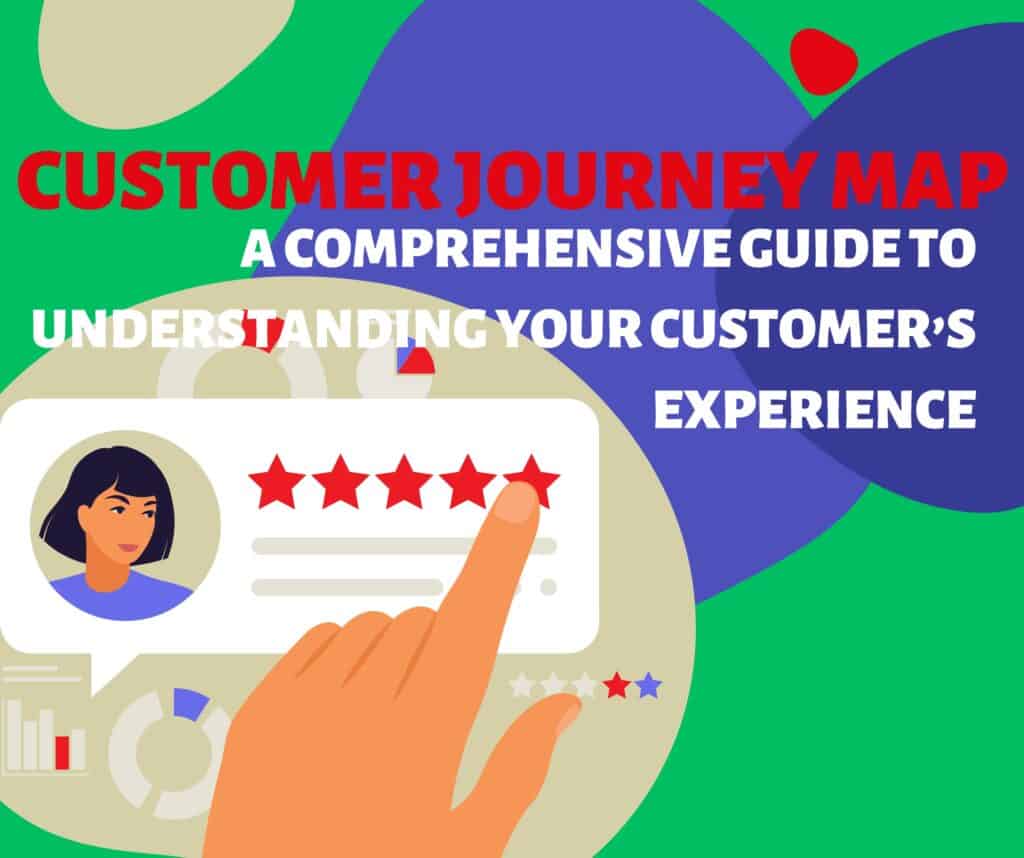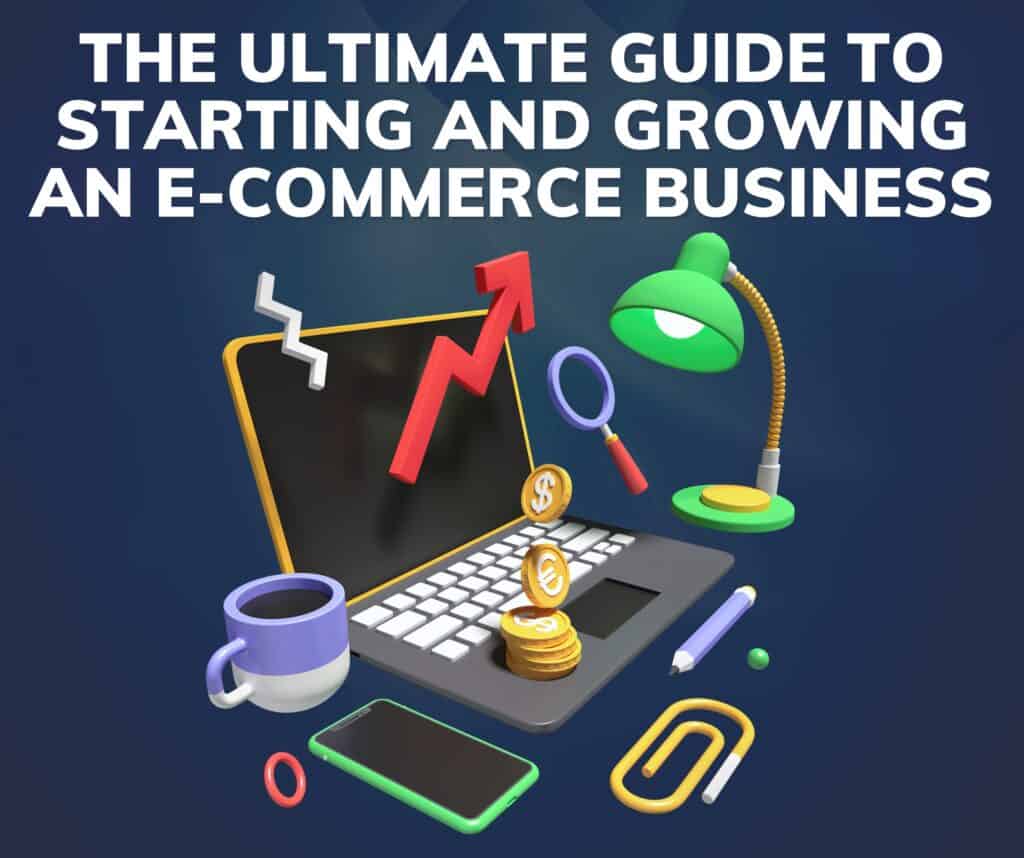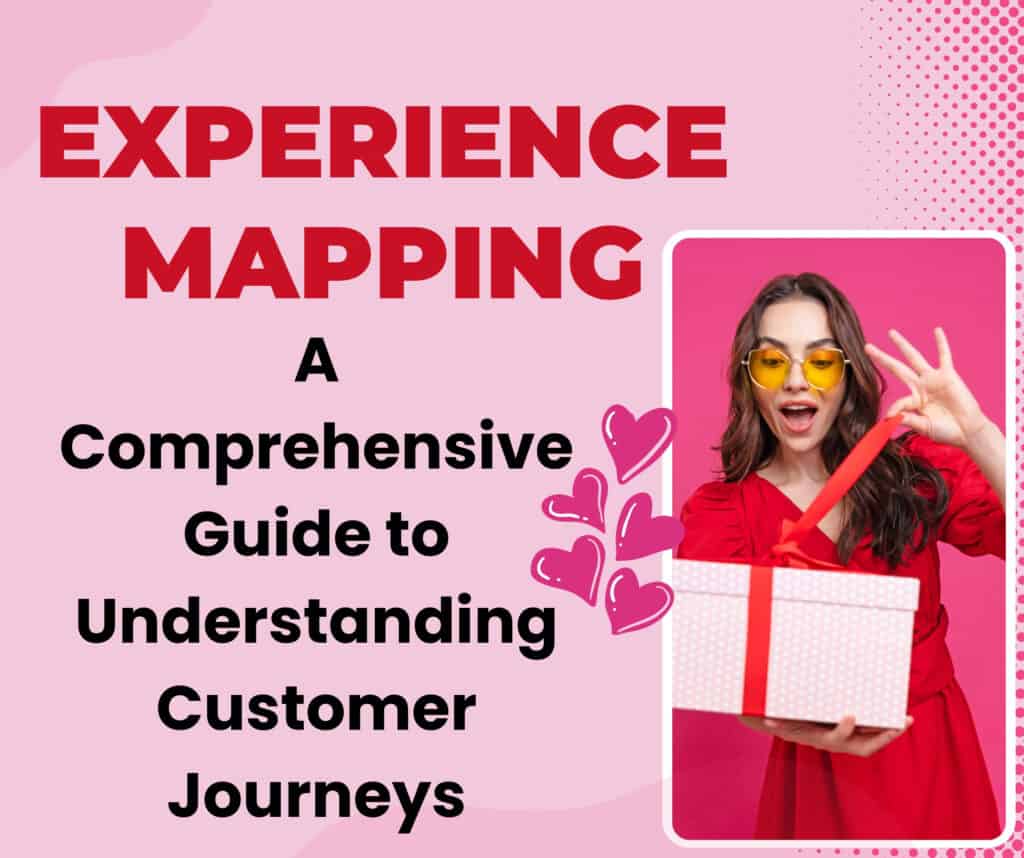In today’s competitive market, understanding your customer’s experience is more critical than ever. A customer journey map is a powerful tool that provides a detailed visualization of the path customers take as they interact with your brand, from their initial awareness to their post-purchase experience. By mapping out this journey, businesses gain invaluable insights into how customers perceive and interact with their products or services at every touchpoint.
Affiliate Disclosure: Some of the links in this post are affiliate links, meaning I may earn a commission if you make a purchase. However, these links offer valuable resources for your online journey.
Try Wealthy Affiliate (For Free).
Why a Customer Journey Map is Important
A customer journey map helps businesses uncover the full story of a customer’s experience, beyond just isolated interactions or feedback. It offers a comprehensive view of the entire process, highlighting key moments when customers are most engaged or frustrated. Here’s why this tool is crucial:
- Holistic Understanding: A customer journey map shows the entire process a customer goes through, offering a holistic view that reveals not just what customers do, but why they do it. This helps businesses understand the motivations, needs, and pain points of their customers.
- Enhanced Customer Experience: By visualizing the customer journey, businesses can identify areas where the experience might be falling short. This allows for targeted improvements that can enhance overall satisfaction and increase the likelihood of repeat business.
- Alignment with Customer Expectations: A well-constructed journey map helps ensure that your business strategies and actions align with customer expectations. This alignment can lead to more effective marketing, better customer service, and a stronger connection with your audience.
- Informed Decision-Making: Insights gained from a customer journey map enable businesses to make data-driven decisions. Whether it’s refining marketing strategies, improving customer service, or streamlining processes, having a clear understanding of the customer journey helps guide these decisions.
- Increased Efficiency: By identifying and addressing inefficiencies or pain points in the customer journey, businesses can streamline operations and reduce costs. This leads to a smoother, more efficient experience for both the customer and the business.
What is a Customer Journey Map?
Definition and Purpose of a Customer Journey Map
A customer journey map is a visual representation that outlines the steps a customer takes while interacting with a business or brand. It captures the entire customer experience, from the initial point of contact to the final purchase and beyond. The map typically includes various stages of the customer journey, such as awareness, consideration, decision, and post-purchase, and highlights key touchpoints, interactions, and customer emotions along the way.
Purpose:
- Visualize the Customer Experience: By mapping out each stage of the journey, businesses can gain a clear, visual understanding of how customers interact with their brand. This helps in identifying strengths and weaknesses in the customer experience.
- Identify Pain Points: Customer journey maps reveal where customers encounter difficulties or frustrations. Addressing these pain points can improve overall satisfaction and reduce churn.
- Enhance Customer Engagement: Understanding the customer journey allows businesses to tailor their engagement strategies to meet customer needs and expectations at each stage.
- Align Strategies with Customer Needs: A journey map helps ensure that marketing, sales, and service strategies are aligned with the actual experiences and needs of customers.
The Role of Customer Journey Mapping in Customer Experience Management
Customer journey mapping plays a crucial role in customer experience management by providing a structured approach to understanding and improving how customers interact with a brand. Here’s how it contributes:
- Holistic View of Customer Interactions: It offers a comprehensive view of all touchpoints and interactions between the customer and the brand, helping businesses see the full picture of the customer experience.
- Improves Communication and Collaboration: By visualizing the customer journey, different departments within an organization can better understand each other’s roles and collaborate more effectively to improve the overall customer experience.
Escape the daily grind. Start your online business now.
Try Wealthy Affiliate (For Free).
- Informs Strategic Decisions: Insights from the journey map guide strategic decisions, such as where to invest in customer service improvements or how to adjust marketing tactics to better resonate with target audiences.
- Enhances Customer-Centric Culture: Creating and using customer journey maps fosters a customer-centric mindset within the organization, focusing efforts on delivering exceptional experiences that meet customer expectations.
Examples of Customer Journey Maps in Different Industries
1. E-commerce:
- Awareness: The customer discovers the online store through social media ads or search engines.
- Consideration: They browse products, read reviews, and compare prices.
- Decision: The customer adds items to the cart, enters payment information, and completes the purchase.
- Post-Purchase: They receive order confirmation, shipping updates, and post-purchase follow-up emails.
2. Healthcare:
- Awareness: A patient learns about a clinic through referrals, advertisements, or online searches.
- Consideration: They review the clinic’s services, check physician credentials, and read patient testimonials.
- Decision: The patient schedules an appointment, visits the clinic, and receives medical care.
- Post-Purchase: Follow-up appointments, patient surveys, and post-treatment care instructions.
3. Financial Services:
- Awareness: A prospective customer hears about financial products through marketing campaigns or referrals.
- Consideration: They research different financial products, compare options, and consult with financial advisors.
- Decision: The customer selects a product, completes the application process, and sets up their account.
- Post-Purchase: Regular account statements, customer service interactions, and personalized financial advice.
4. Travel and Hospitality:
- Awareness: A traveler learns about a destination or hotel through travel websites, social media, or recommendations.
- Consideration: They compare options, read reviews, and check availability and pricing.
- Decision: The traveler books flights, accommodations, and other travel services.
- Post-Purchase: They receive booking confirmations, travel itineraries, and follow-up surveys to gather feedback on their experience.
Why is a Customer Journey Map Important?
A customer journey map is not just a visual representation but a strategic tool that provides deep insights into customer behavior and interactions. Here’s a detailed look at why creating and utilizing a customer journey map is crucial for businesses:
Understanding Customer Needs and Pain Points
1. Identifies Customer Needs:
- Holistic Insight: A customer journey map helps businesses understand what customers need at each stage of their journey. This includes recognizing their expectations, motivations, and requirements from initial contact to post-purchase.
- Empathy Building: By visualizing the customer experience, businesses can empathize with their customers, seeing the world from their perspective. This empathy enables the creation of products, services, and communications that truly resonate with customers’ needs.
2. Highlights Pain Points:
- Pinpointing Issues: The map uncovers specific moments where customers experience difficulties or frustrations, such as confusing website navigation or delays in customer service responses.
- Opportunity for Improvement: Identifying these pain points allows businesses to address and rectify them, enhancing the overall customer experience and reducing churn.
Ready to earn online? Click here to get started.
Try Wealthy Affiliate (For Free).
Enhancing Customer Experience and Satisfaction
1. Personalizing Interactions:
- Tailored Experiences: With a clear understanding of the customer journey, businesses can personalize interactions based on customer behavior and preferences. For example, personalized recommendations or targeted offers can be made at key touchpoints.
- Consistent Experience: Ensuring a seamless and consistent experience across all touchpoints helps in maintaining customer satisfaction and prevents disjointed or frustrating interactions.
2. Proactive Service Improvements:
- Anticipating Needs: A journey map helps businesses anticipate customer needs and address them proactively. For instance, if customers often need assistance during a specific stage, providing additional resources or support at that point can significantly enhance their experience.
- Continuous Enhancement: Regularly updating the journey map based on customer feedback and changing behaviors allows businesses to continually refine and improve the customer experience.
Aligning Business Goals with Customer Expectations
1. Strategic Alignment:
- Goal Setting: By understanding the customer journey, businesses can align their goals and strategies with what customers value most. For example, if the map reveals that quick delivery is a top priority for customers, a business might set goals to improve shipping times.
- Resource Allocation: The map guides how to allocate resources effectively, focusing efforts on areas that directly impact customer satisfaction and contribute to business objectives.
2. Enhanced Communication:
- Internal Alignment: A shared understanding of the customer journey across departments ensures that marketing, sales, and customer service teams work towards common goals. This alignment helps in delivering a cohesive and unified customer experience.
Driving Higher Conversion Rates and Customer Loyalty
1. Optimizing Conversion Paths:
- Streamlining Processes: By analyzing the customer journey, businesses can identify and remove obstacles that might hinder conversions. For instance, simplifying the checkout process or improving the user interface can lead to higher conversion rates.
- Effective Call-to-Actions: Understanding the journey helps in placing effective call-to-actions (CTAs) at optimal stages, increasing the likelihood of customer actions such as making a purchase or signing up for a newsletter.
2. Building Customer Loyalty:
- Creating Memorable Experiences: A seamless and positive customer journey fosters loyalty by creating memorable experiences that encourage repeat business. Satisfied customers are more likely to return and recommend the brand to others.
- Engaging Post-Purchase: Effective post-purchase engagement, such as follow-up emails, loyalty programs, and personalized offers, helps maintain a strong relationship with customers, further enhancing their loyalty.
Key Components of a Customer Journey Map
A well-crafted customer journey map is built upon several key components that together provide a comprehensive view of the customer experience. Here’s a detailed look at each component:
Turn your passion into profit. Click to start now.
Try Wealthy Affiliate (For Free).
Customer Personas
Importance of Creating Accurate Customer Personas:
- Personalization: Accurate customer personas represent different segments of your audience, each with unique needs, preferences, and behaviors. Creating detailed personas helps in tailoring marketing strategies, product offerings, and communication to meet the specific needs of each group.
- Focused Strategies: Personas provide a clear picture of who your customers are, enabling you to design more effective customer journey maps that reflect their actual experiences and expectations. This focused approach improves the relevance and impact of your business strategies.
How to Gather Data for Customer Personas:
- Surveys and Interviews: Conducting surveys and interviews with existing customers helps gather direct feedback on their preferences, motivations, and pain points. This qualitative data is essential for creating accurate and meaningful personas.
- Behavioral Data: Analyzing data from customer interactions, such as website analytics, purchase history, and social media engagement, provides insights into customer behavior and preferences. This data helps refine personas and ensure they are based on real customer actions.
- Customer Feedback: Collecting feedback through reviews, support tickets, and customer service interactions offers additional insights into customer needs and challenges, further enhancing the accuracy of your personas.
Touchpoints
Identifying Key Touchpoints in the Customer Journey:
- Customer Interactions: Touchpoints are the various interactions a customer has with your brand, from discovering your product to post-purchase support. Identifying these touchpoints involves mapping out every moment where customers engage with your business, such as website visits, email interactions, and in-store experiences.
- Customer Pathways: Consider how customers move from one touchpoint to another and the sequence of interactions. This helps in understanding the full scope of the customer journey and recognizing key moments of engagement.
Analyzing the Impact of Each Touchpoint on Customer Experience:
- Effectiveness: Evaluate how each touchpoint influences the overall customer experience. For example, a smooth checkout process enhances satisfaction, while a complicated one can lead to frustration and abandoned carts.
- Emotional Response: Assess the emotional impact of each touchpoint. Positive interactions can build trust and loyalty, while negative ones can drive customers away. Understanding these impacts helps in optimizing touchpoints to improve the overall experience.
Customer Emotions and Pain Points
Tracking Customer Emotions at Different Stages:
- Emotional Mapping: Documenting customer emotions at various stages of their journey helps identify how they feel during each interaction. For example, a customer might feel excited during the discovery phase but frustrated during a lengthy checkout process.
- Customer Sentiment: Use tools like sentiment analysis to gauge customer emotions from feedback, reviews, and social media. This helps in understanding the emotional highs and lows throughout the journey.
Addressing Common Pain Points to Improve the Journey:
- Identifying Pain Points: Common pain points include long wait times, confusing processes, or poor customer service. By pinpointing these issues, businesses can implement targeted solutions to alleviate customer frustrations.
- Implementing Solutions: Addressing pain points might involve simplifying processes, improving communication, or providing additional support. Regularly reviewing and updating the journey map based on feedback and performance metrics ensures continuous improvement.
Channels
Mapping Out the Channels Customers Use:
- Channel Identification: Identify all the channels through which customers interact with your brand, such as your website, social media platforms, email, phone support, and in-person stores. Mapping these channels helps in understanding where and how customers engage with your business.
- Channel Integration: Consider how different channels are integrated and whether customers experience a seamless transition between them. For example, a customer might start their journey on social media and complete a purchase on your website.
Optimizing Channels for a Seamless Experience:
- Consistency: Ensure that each channel provides a consistent experience, with uniform messaging and branding. Consistency across channels helps in building trust and preventing confusion.
- Channel-Specific Improvements: Tailor improvements to each channel based on its unique role in the customer journey. For instance, optimizing your website for mobile users or enhancing social media engagement can significantly impact the overall experience.
Steps to Create a Customer Journey Map
Creating an effective customer journey map involves several structured steps that help in understanding and improving the customer experience. Here’s a detailed guide to each step:
Step 1: Research and Data Collection
Methods for Gathering Qualitative and Quantitative Data:
- Qualitative Data:
- Customer Interviews: Conduct in-depth interviews with customers to gather detailed insights into their experiences, motivations, and challenges. These conversations provide rich, narrative data that helps in understanding the customer perspective.
- Focus Groups: Organize focus group discussions to collect feedback from multiple customers at once. This method allows for exploration of customer attitudes and opinions in a group setting, providing diverse viewpoints.
- Surveys: Use open-ended questions in surveys to capture detailed feedback about customer experiences. This helps in identifying common themes and specific issues that customers encounter.
- Quantitative Data:
- Analytics: Analyze data from web analytics tools to track customer behavior, such as page views, click-through rates, and conversion rates. This data helps in identifying patterns and trends in customer interactions.
- Customer Feedback Forms: Collect structured data through feedback forms that ask specific questions about customer satisfaction, service quality, and overall experience. This provides measurable insights into customer perceptions.
Want to build an online business? Start here.
Try Wealthy Affiliate (For Free).
Tools for Collecting Customer Insights:
- Survey Platforms: Tools like SurveyMonkey, Google Forms, and Typeform can be used to design and distribute surveys, collect responses, and analyze results.
- Analytics Tools: Google Analytics, Hotjar, and Crazy Egg offer insights into customer behavior on your website, including how users navigate and interact with different elements.
- CRM Systems: Customer Relationship Management (CRM) systems like Salesforce and HubSpot store valuable data on customer interactions, preferences, and history, which can be used to build detailed customer profiles.
Step 2: Define Customer Personas
Creating Detailed Personas Based on Collected Data:
- Segmenting Your Audience: Analyze the data collected to identify distinct customer segments based on demographics, behaviors, and needs. For example, you might segment your audience into categories such as “budget-conscious shoppers” or “premium product seekers.”
- Building Personas: Develop detailed personas for each segment, including information such as:
- Demographics: Age, gender, income level, education, and occupation.
- Behaviors: Shopping habits, preferred channels, and purchase frequency.
- Goals and Needs: What customers are looking to achieve and how your product or service helps meet those needs.
- Pain Points: Common challenges or frustrations customers face during their journey.
- Using Personas: Ensure that these personas are used throughout the journey mapping process to tailor strategies and solutions to meet the specific needs of each customer segment.
Step 3: Identify Key Stages in the Customer Journey
Mapping Out the Stages from Awareness to Post-Purchase:
- Awareness: The initial stage where customers become aware of your brand or product through marketing efforts, recommendations, or other channels.
- Consideration: Customers research and evaluate different options, compare products or services, and consider their choices.
- Decision: The stage where customers make a decision to purchase, involving actions such as adding items to the cart and completing the checkout process.
- Post-Purchase: Includes activities after the purchase, such as order fulfillment, customer support, and follow-up communications. This stage is crucial for building long-term relationships and ensuring customer satisfaction.
- Visualizing Stages: Use a flowchart or diagram to illustrate these stages and the transitions between them. This helps in understanding the sequence of customer interactions and identifying key moments of engagement.
Step 4: Map Touchpoints and Channels
Documenting Interactions and Channels at Each Stage:
- Touchpoints: List all the touchpoints where customers interact with your brand at each stage of the journey. These may include website visits, social media interactions, email communications, in-store experiences, and customer service calls.
- Channels: Identify the different channels customers use to engage with your brand, such as your website, mobile app, social media platforms, email, and physical stores.
- Mapping Interactions: Document how customers engage with each touchpoint and channel. For example, during the consideration stage, customers might visit your website, read product reviews, and interact with your social media posts.
Step 5: Analyze and Optimize
Identifying Gaps and Opportunities for Improvement:
- Gap Analysis: Review the customer journey map to identify gaps or areas where the customer experience may be lacking. For example, you might find that customers encounter difficulties during the checkout process or experience delays in customer support.
- Opportunity Identification: Look for opportunities to enhance the experience at each stage. This might include streamlining processes, improving communication, or adding new touchpoints to better meet customer needs.
Implementing Changes to Enhance Customer Experience:
- Action Plan: Develop an action plan to address the identified gaps and opportunities. This could involve redesigning the website, improving response times for customer service, or creating targeted marketing campaigns.
- Monitoring and Feedback: Implement the changes and monitor their impact on the customer experience. Collect feedback from customers to evaluate the effectiveness of the improvements and make further adjustments as needed.
Tools and Templates for Customer Journey Mapping
Creating an effective customer journey map can be greatly facilitated by using specialized tools and templates. Here’s an overview of popular tools, guidance on choosing the right one for your business, and options for free and paid templates.
Ready to take control of your life? Click to begin.
Try Wealthy Affiliate (For Free).
Overview of Popular Customer Journey Mapping Tools
1. Microsoft Visio:
- Features: Offers a range of diagramming tools that are ideal for creating detailed customer journey maps. Provides templates and shapes for various stages and touchpoints.
- Best For: Businesses looking for a comprehensive diagramming tool with robust customization options.
2. Lucidchart:
- Features: A cloud-based diagramming tool that allows for easy creation and sharing of customer journey maps. Includes collaborative features, which enable multiple team members to work on the map simultaneously.
- Best For: Teams needing a collaborative platform with real-time updates and integration with other tools like Google Drive and Slack.
3. Miro:
- Features: An online collaborative whiteboard platform that supports customer journey mapping with drag-and-drop functionality, customizable templates, and real-time collaboration.
- Best For: Teams that require a flexible, interactive tool for brainstorming and visualizing customer journeys.
4. Smaply:
- Features: Specifically designed for customer journey mapping, Smaply offers features such as journey mapping templates, persona creation, and stakeholder management.
- Best For: Businesses looking for a dedicated customer journey mapping tool with built-in templates and features.
5. UXPressia:
- Features: Provides an easy-to-use interface for creating customer journey maps, personas, and impact maps. Includes options for exporting and sharing maps.
- Best For: Users who need a straightforward tool for creating and presenting customer journey maps without extensive customization.
6. Adobe XD:
- Features: A design and prototyping tool that can be used to create detailed customer journey maps with high customization. Supports interactive elements and visual design.
- Best For: Design-focused teams looking for a tool that integrates with their overall UX/UI design process.
How to Choose the Right Tool for Your Business
1. Define Your Needs:
- Complexity of Mapping: Consider the complexity of your customer journey maps. For simple maps, basic tools like Microsoft Visio might suffice, while more detailed or interactive maps may require advanced tools like Miro or Smaply.
- Collaboration Requirements: If your team needs to collaborate in real-time, look for tools with strong collaborative features, such as Lucidchart or Miro.
2. Evaluate Integration Capabilities:
- Integration with Existing Tools: Ensure that the tool you choose integrates well with other tools you use, such as CRM systems, project management software, or analytics platforms.
3. Consider Budget and Resources:
- Cost vs. Features: Compare the cost of different tools with the features they offer. Some tools have free versions with limited features, while others offer premium features at a higher cost.
- Training and Support: Assess whether the tool offers adequate support and resources for onboarding and training. Some tools provide extensive documentation and customer support, which can be helpful during implementation.
4. Test Usability:
- Ease of Use: Choose a tool that is intuitive and easy to use for your team. Many tools offer free trials or demo versions, allowing you to test their functionality before committing.
Free and Paid Templates for Creating a Customer Journey Map
Free Templates:
- HubSpot’s Free Journey Map Template: HubSpot offers a free customer journey map template that can be downloaded and customized using tools like Excel or PowerPoint. It provides a basic structure for mapping out customer stages and touchpoints.
- Canva: Canva provides various free templates for customer journey mapping. These templates are highly customizable and can be used to create visually appealing maps without extensive design skills.
- Google Slides: Google Slides offers free templates for creating customer journey maps. These can be easily shared and collaborated on with team members.
Start your journey to financial freedom today. Click below.
Try Wealthy Affiliate (For Free).
Paid Templates:
- Smaply Templates: Smaply offers a range of paid templates specifically designed for customer journey mapping. These templates come with pre-defined structures and elements, making it easier to create detailed and professional maps.
- UXPressia Templates: UXPressia provides a variety of paid templates for customer journey maps, personas, and impact maps. The paid versions offer additional features and customization options compared to the free templates.
- Envato Elements: Envato Elements offers a subscription-based service with access to a wide range of professionally designed customer journey map templates. These templates are highly customizable and come with various design elements.
Best Practices for Effective Customer Journey Mapping
Creating a customer journey map that truly reflects and enhances the customer experience requires adhering to several best practices. These practices ensure that the map is not only accurate but also actionable and continuously relevant. Here’s a closer look at these best practices:
Keep It Customer-Centric
Focusing on the Customer’s Perspective:
- Empathy Mapping: To create a customer-centric journey map, it’s crucial to step into the customer’s shoes. Use empathy mapping techniques to understand customers’ thoughts, feelings, and needs at each stage of their journey. This approach helps in capturing the emotional and psychological aspects of the customer experience.
- Customer Feedback: Incorporate direct feedback from customers into the journey map. This includes surveys, interviews, and reviews that provide insights into their experiences, preferences, and pain points. By integrating this feedback, you ensure that the map reflects real customer experiences rather than assumptions.
- Scenario-Based Mapping: Develop scenarios based on different customer personas or segments. This helps in understanding how various types of customers interact with your brand and what unique challenges they might face. Tailoring the journey map to these scenarios ensures that it addresses the needs of diverse customer groups.
Collaborate Across Departments
Involving Different Teams in the Mapping Process:
- Cross-Functional Input: Customer journey mapping should be a collaborative effort involving various departments such as marketing, sales, customer service, and product development. Each department has unique insights into customer interactions and can provide valuable input into the journey map.
- Workshops and Meetings: Conduct workshops or meetings with representatives from different teams to discuss and contribute to the journey map. This collaborative approach ensures that all aspects of the customer experience are considered and that different perspectives are integrated.
- Unified Vision: Ensure that all departments are aligned with the customer journey map’s goals and objectives. A shared understanding of the customer journey helps in creating a cohesive strategy and improving overall customer experience management.
Regularly Update the Journey Map
Keeping the Map Up-to-Date with Changing Customer Behaviors:
- Continuous Monitoring: Regularly review and update the customer journey map to reflect changes in customer behavior, market trends, and business processes. Customer preferences and behaviors can evolve, and the journey map should adapt accordingly to remain relevant.
- Feedback Loops: Establish mechanisms for continuously collecting customer feedback and monitoring key performance indicators (KPIs). Use this data to make timely updates to the journey map and address emerging issues or opportunities.
- Periodic Reviews: Schedule regular reviews of the journey map (e.g., quarterly or bi-annually) to assess its accuracy and effectiveness. During these reviews, analyze any discrepancies between the map and actual customer experiences, and make necessary adjustments.
Use Data-Driven Insights
Leveraging Data to Make Informed Decisions:
- Data Collection: Gather quantitative data from various sources such as website analytics, CRM systems, and social media. This data provides objective insights into customer behavior, touchpoint effectiveness, and overall journey performance.
- Data Analysis: Analyze the collected data to identify trends, patterns, and areas of concern. Use techniques such as segmentation analysis and funnel analysis to understand how different factors impact the customer journey and where improvements can be made.
- Actionable Insights: Translate data findings into actionable strategies for improving the customer journey. For example, if data shows that customers abandon their carts during checkout, consider optimizing the checkout process based on these insights.
- A/B Testing: Implement A/B testing to evaluate the impact of changes or improvements on customer experience. Testing different versions of touchpoints or processes helps in determining what works best and making data-driven decisions.
Conclusion
Recap of the Importance and Benefits of Customer Journey Mapping:
Customer journey mapping is a crucial practice for any business aiming to enhance its customer experience and drive success. By creating a visual representation of the customer’s interactions with your brand, you gain valuable insights into their needs, emotions, and pain points throughout their journey. This comprehensive view helps in understanding how customers engage with your brand from the initial awareness stage to post-purchase interactions.
Ready to work for yourself? Start here.
Try Wealthy Affiliate (For Free).
The benefits of customer journey mapping are manifold:
- Improved Customer Experience: By identifying and addressing pain points and gaps, you can refine touchpoints and processes to offer a smoother and more satisfying experience.
- Enhanced Customer Satisfaction: A deeper understanding of customer needs and expectations allows you to tailor your services and communication strategies, leading to higher satisfaction and loyalty.
- Informed Decision-Making: Data-driven insights from the journey map guide strategic decisions, helping you prioritize improvements and allocate resources effectively.
- Increased Business Success: An optimized customer journey can drive higher conversion rates, foster customer retention, and ultimately contribute to business growth and profitability.
Encouragement to Start Mapping Out the Customer Journey:
Embarking on the journey mapping process is a proactive step towards creating a customer-centric business. It involves not just understanding but also anticipating your customers’ needs, which is key to staying competitive in today’s market. By mapping out the customer journey, you lay the groundwork for making informed improvements, developing targeted strategies, and delivering exceptional experiences that resonate with your audience.
Starting the mapping process may seem daunting, but the insights and benefits it provides are well worth the effort. Begin by gathering data, defining customer personas, and mapping out the key stages and touchpoints. Involve various departments in the process to ensure a holistic view and use data-driven insights to guide your improvements.
We’d love to hear from you! Have you created a customer journey map for your business? What insights or challenges did you encounter during the process? If you’re just getting started, do you have any questions or need further guidance on mapping out your customer journey?
Share your experiences, questions, or thoughts in the comments below. Engaging with our community can provide valuable insights and help you make the most of your customer journey mapping efforts. Let’s learn and grow together!







